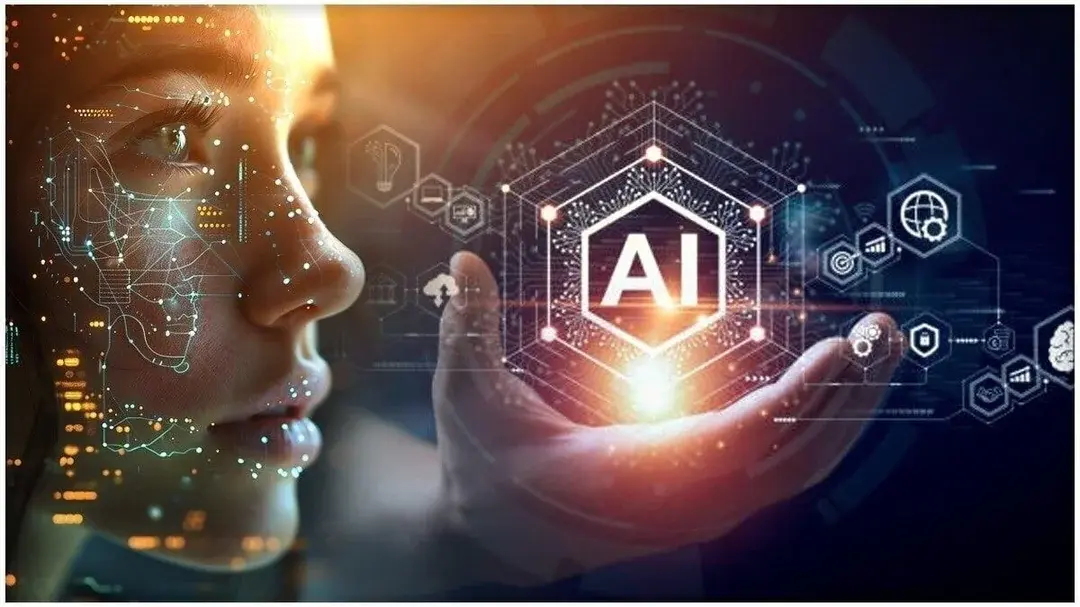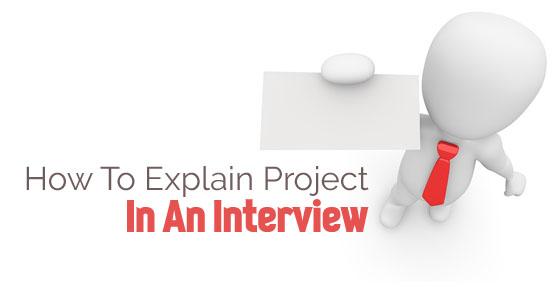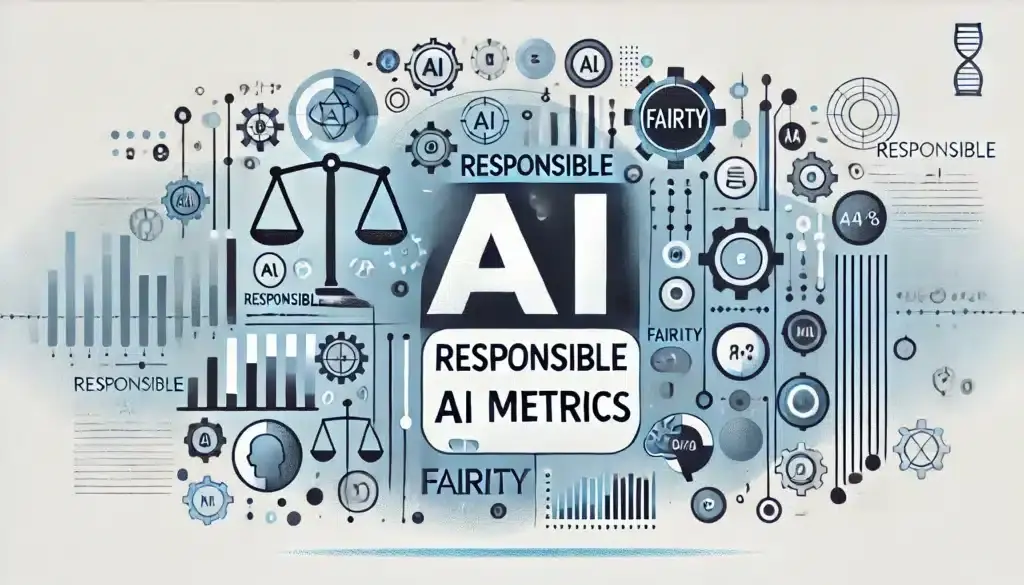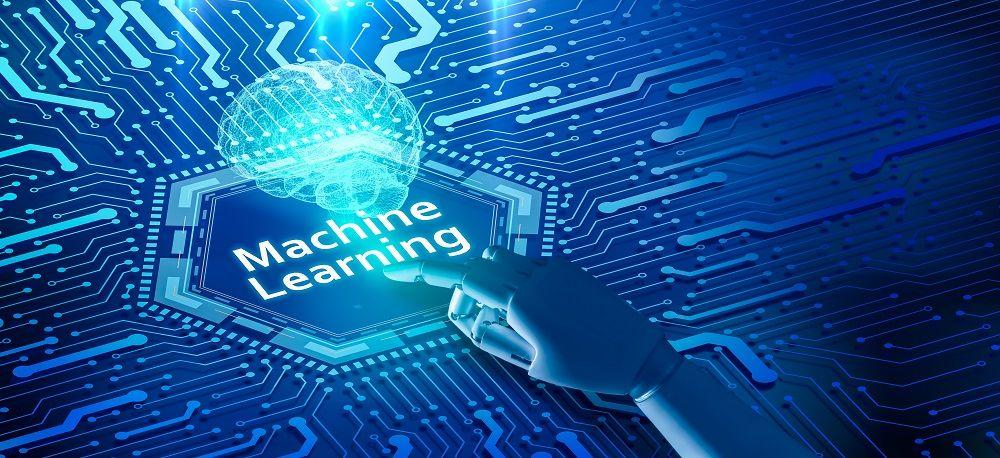Section 1 - The Turning Point: Why AI Hiring Is Entering a New Phase
For the past decade, ML interviews have revolved around familiar patterns, data structures, system design, math puzzles, and model reasoning.
But 2026 marks the start of something fundamentally new: AI-assisted interviewing and AI-assisted candidates.
Recruiters and engineers are both using large language models, evaluation frameworks, and automated systems, turning the traditional interview loop into an AI-to-AI interaction.
The ML interview of 2026 won’t just test what you know.
It will test how you reason, adapt, and collaborate with intelligent systems.
a. The Old Playbook Is Dying
Five years ago, ML hiring at FAANG companies looked like this:
- LeetCode-style screening rounds
- Kaggle-like take-home challenges
- “Design a recommendation system” whiteboards
But that model is now outdated.
Today, every candidate can use GPT-powered assistants to:
- Generate code templates
- Simulate mock interviews
- Debug data pipelines instantly
So, interviewers are shifting the goalposts.
They’re no longer asking:
“Can you solve this?”
They’re asking:
“Can you explain why this solution works, what trade-offs it has, and how you’d adapt it if the data changed?”
This new expectation, reasoning under uncertainty, is the defining skill of the AI-native engineer.
Check out Interview Node’s guide “The Hidden Metrics: How Interviewers Evaluate ML Thinking, Not Just Code”
b. Why 2026 Is Different
There have been two major shifts:
- AI integration into the interview loop (automated grading, GPT-based technical assessments).
- Industry-wide expectation of AI fluency, candidates must now understand, evaluate, and collaborate with AI models.
According to recent internal data shared by recruiters from Amazon and Anthropic, over 60% of ML technical interviews now include questions on LLM behavior, hallucination mitigation, or prompt engineering.
The new normal:
“How would you make an LLM more factual, interpretable, and production-ready?”
And this trend will only accelerate in 2026.
c. The Rise of AI-Enhanced Evaluation
Leading companies are beginning to use AI evaluation platforms that grade candidate responses based on:
- Depth of reasoning
- Code structure and documentation clarity
- Communication tone and adaptability
These systems don’t replace human interviewers, they augment them.
The future interviewer might be 60% human, 40% model.
A candidate might interact with an AI interviewer first, which scores technical reasoning, before moving to a human panel for discussion.
Check out Interview Node’s guide “The Future of ML Interview Prep: AI-Powered Mock Interviews”
d. The New Signal: How You Think with AI
In 2026, interviewers will judge candidates not by memorized syntax, but by how they leverage AI effectively:
- Do you use AI assistants intelligently, not blindly?
- Can you evaluate when a model’s suggestion is wrong?
- Do you know how to verify, cite, or improve AI-generated results?
Those who can demonstrate AI collaboration literacy will have a massive edge.
Key Takeaway
2026 is the year ML interviews evolve from knowledge testing to reasoning demonstration.
The engineers who thrive will be those who:
- Think in systems, not snippets
- Use AI as a partner, not a crutch
- Communicate thinking transparently under uncertainty
In short, the ML interview of 2026 won’t ask you to outperform AI; it’ll ask you to work alongside it.
Section 2 - The Shift from Coding to Cognitive Evaluation: How ML Interviews Are Becoming Reasoning-First
For years, machine learning engineers dreaded algorithm-heavy interviews, timed whiteboards, recursive coding puzzles, and data structure traps.
But in 2026, the focus is no longer on “how fast you can code.”
It’s on how well you can think.
We’re entering the era of reasoning-first ML interviews, where your process matters more than your product.
a. The Decline of Pure Coding Interviews
Until recently, ML interviews often mimicked software engineering ones:
- “Implement binary search.”
- “Write a function to check if a tree is balanced.”
- “Predict the output of this code snippet.”
But as tools like GitHub Copilot, Claude, and ChatGPT have automated boilerplate coding, these questions have lost their evaluative power.
Interviewers realized that raw syntax recall no longer differentiates strong candidates from average ones.
Why?
Because every engineer now has access to the same AI toolkit.
What matters is not writing code, but reasoning about what the code should do.
Check out Interview Node’s guide “Coding vs. ML Interviews: What’s the Difference and How to Prepare for Each”
b. The Rise of Cognitive Evaluation
“Cognitive evaluation” is the new interview core.
Instead of asking you to produce an answer, interviewers want to see:
- How you approach problems under ambiguity.
- How you evaluate trade-offs between options.
- How you communicate reasoning to non-technical stakeholders.
In other words, they’re not scoring your IDE performance, they’re scoring your thinking architecture.
“We’re less interested in whether you know a sorting algorithm and more in how you’d decide which algorithm fits a production constraint,”
says a hiring manager at Meta AI.
That’s why prompts now look like this:
“Our recommendation system underperforms for new users. How would you debug it?”
or
“You have a large LLM that produces inconsistent answers, what steps would you take to improve reliability?”
c. The Emergence of “Explainability-First” Interviews
In 2026, ML interviews are becoming explainability-first.
Hiring panels expect engineers to reason about why their approach works, not just how.
You might get questions like:
- “Why did you choose this loss function?”
- “What would happen if we replaced this layer with an attention block?”
- “How would you justify this model’s decisions to a compliance team?”
These are not just technical, they’re cognitive, ethical, and communicative.
They test if you can reason about models like a scientist, not just implement them like a coder.
Check out Interview Node’s guide “Explainable AI: A Growing Trend in ML Interviews”
d. The “Think-Aloud” Revolution
Top companies like OpenAI, Google DeepMind, and Anthropic are now explicitly evaluating how candidates verbalize thought.
In past years, silence during coding was acceptable.
In 2026, it’s a red flag.
Interviewers expect candidates to externalize reasoning, explaining assumptions, constraints, and possible failure points in real time.
The best candidates narrate like this:
“I’d start by defining the goal, if the issue is data drift, I’ll first check feature distributions. If it’s model decay, I’ll retrain with recent samples. Here’s how I’d measure the difference statistically…”
This skill, called meta-reasoning, is the new “differentiator skill.”
It shows that you can work transparently in collaborative, AI-augmented environments.
e. Behavioral Depth Meets Technical Rigor
Cognitive interviews also blend behavioral and technical signals.
Instead of separating “tech” and “soft skills,” interviewers now merge them.
A single question like:
“Tell me about a time you had to choose between model performance and interpretability,”
tests:
- Technical judgment
- Communication clarity
- Ethical awareness
- Collaboration maturity
In 2026, interviewers increasingly value narrative-based reasoning, candidates who can describe how they think, act, and decide in complex ML contexts.
The “perfect” candidate isn’t just technically sharp, they’re contextually intelligent.
f. Why This Shift Makes Interviews Fairer
Ironically, as interviews become more cognitive, they’re also becoming more equitable.
Reasoning-based questions allow candidates from non-traditional backgrounds, bootcamp graduates, self-taught engineers, research assistants, to compete on clarity of thinking, not memorized algorithms.
It’s no longer about where you learned ML; it’s about how you reason about it.
And this, hiring experts say, is producing better long-term hires, engineers who adapt faster, collaborate better, and make fewer rushed decisions in production environments.
g. How to Prepare for Reasoning-First Interviews
Here’s how to adapt:
- Practice thinking aloud: Record yourself explaining ML trade-offs verbally.
- Rehearse “why” questions: Be ready to defend each modeling choice.
- Reflect on past projects: Identify moments where you balanced performance vs interpretability or automation vs control.
- Simplify your language: If you can’t explain your pipeline to a PM, you don’t understand it well enough.
- Study ambiguity: Practice open-ended prompts with no single answer, like designing scalable retraining pipelines or mitigating LLM drift.
Key Takeaway
By 2026, machine learning interviews will look less like exams and more like conversations.
They’ll test your:
- Thought structure
- Collaborative reasoning
- Decision-making maturity
The ability to code will still matter, but the ability to explain your choices will matter more.
“In 2026, every ML interview is a reasoning test disguised as a coding question.”
Section 3 - How AI Tools Are Changing the Preparation and Evaluation Loop
By 2026, AI tools will be at the center of the interview ecosystem.
They’ll shape how candidates prepare, how recruiters evaluate, and how hiring systems measure reasoning quality.
In short: AI won’t just influence interviews, it will run them.
a. AI-Powered Preparation: The New “Interview Gym”
In 2023, using ChatGPT for mock interviews was a hack.
By 2026, it’s a necessity, and the entire interview prep world has become AI-native.
Candidates now train like athletes, using AI interview simulators that mimic company-specific questions, recruiter behavior, and technical scenarios.
These tools are personalized, adaptive, and often indistinguishable from real conversations.
Imagine:
- Practicing a Meta ML system design interview with a model trained on FAANG-style evaluation rubrics.
- Getting real-time feedback on how well you explained trade-offs, not just whether your answer was correct.
- Having your reasoning transcript scored for clarity, confidence, and structure.
This is already happening with products like InterviewNode AI Coach, PrampGPT, and AIcopilot.io, which offer targeted ML reasoning exercises aligned with current industry frameworks.
b. From Syntax to Semantics: How AI Prep Tools Are Rewiring Practice
The biggest difference between pre-AI prep and 2026-style prep is focus.
Old-school prep emphasized syntax mastery, solving hundreds of questions on arrays and strings.
Now, intelligent prep systems emphasize semantic reasoning, how you explain, contextualize, and refine solutions.
When a candidate uses an AI simulator, the model might respond:
“You solved it correctly, but your explanation missed why your approach is memory-optimal. Try rephrasing.”
That’s coaching at a meta-cognitive level, helping candidates think about how they think.
It’s no longer about repetition; it’s about reflection.
c. Recruiters Are Using AI, Too
On the other side of the table, recruiters and hiring platforms are also deploying AI systems to evaluate candidates.
These tools help assess:
- Technical comprehension - by analyzing how well a candidate explains code or algorithms.
- Communication clarity - using NLP models to detect coherence and empathy in responses.
- Bias reduction - by anonymizing candidate details before human review.
For instance, AI-based evaluation frameworks like HireLogic, Metaview, and Pymetrics ML Recruit are being trained to measure candidate potential, not just past experience.
“The AI interviewer doesn’t care about your pedigree,” says a senior recruiter at Anthropic.
“It cares about how you think, how you learn, and how you explain ambiguity.”
d. The Rise of Hybrid Interviews: Human + AI Collaboration
By 2026, most ML interviews will be hybrid, a collaboration between AI-driven evaluators and human decision-makers.
Here’s how a typical process might look:
- Round 1 (AI Assessment):
The candidate interacts with an AI interviewer that asks scenario-based ML questions. It evaluates structure, reasoning, and tone. - Round 2 (Human Discussion):
A senior engineer reviews AI feedback, then conducts a deeper follow-up round focused on creativity and collaboration. - Round 3 (Panel Calibration):
AI-generated summaries help the panel identify reasoning gaps or bias patterns before making final decisions.
This hybrid model saves time, improves fairness, and gives interviewers structured context.
But it also introduces new ethical questions, how transparent should AI grading be?
Check out Interview Node’s guide “AI in Interviews: Friend or Foe in the 2025 Job Market?”
e. The Fairness Paradox
One of the promises of AI-driven hiring is fairness, removing human bias in early screening.
However, as AI becomes the evaluator, algorithmic bias becomes a new concern.
Models trained on historical data might favor certain speaking patterns, technical jargon, or problem-solving styles.
This creates subtle inequities, even in supposedly neutral systems.
Forward-thinking ML recruiters are addressing this by:
- Re-training interview models on diverse candidate data.
- Adding explainability layers that show how evaluation decisions were made.
- Incorporating human-in-the-loop correction for outlier cases.
By 2026, “AI fairness” won’t be a topic, it’ll be a job role.
f. The “AI Copilot” Advantage
For candidates, AI assistants are now legitimate co-pilots.
It’s no longer cheating to use them, it’s expected.
In fact, recruiters increasingly want to see:
- How you integrate AI tools into workflows.
- How you verify or challenge AI output.
- How you communicate with AI systems effectively.
For example, if you’re given an ML design prompt like:
“Design a fraud detection pipeline,”
and you mention:
“I’d use an AI assistant to prototype multiple model architectures, then manually validate feature importance and fairness metrics,”
-you’ve demonstrated AI collaboration literacy.
That’s the 2026 differentiator.
g. Preparing for AI-Evaluated Interviews
Here’s how to stay ahead:
- Record and review your reasoning sessions: AI or not, clarity of explanation is the new metric.
- Simulate multi-turn interviews: Practice refining answers across follow-up prompts.
- Use AI as a mirror, not a crutch: Let it reflect your weak points, verbosity, overconfidence, under-explanation.
- Build intuition for model bias: Practice spotting when AI feedback seems off.
- Document your thought process: Be ready to explain how you used AI tools responsibly.
Check out Interview Node’s guide “The Psychology of Interviews: Why Confidence Often Beats Perfect Answers”
Key Takeaway
The AI interview ecosystem of 2026 will be symbiotic.
Humans and machines will evaluate each other, with reasoning, adaptability, and ethics as the new scoring metrics.
Success won’t depend on who codes fastest, but on who thinks most clearly in partnership with AI.
“In 2026, interview success won’t come from mastering tools, it’ll come from mastering your relationship with them.”
Section 4 - The New Interview Formats and Roles Emerging in 2026
By 2026, the ML interview won’t look anything like what engineers faced in 2020.
No more static whiteboards, no more one-size-fits-all coding tests.
Instead, companies are designing adaptive, AI-powered interview formats that evaluate real-world reasoning, ethics, and AI fluency.
The goal is simple:
Find engineers who can collaborate, critique, and build responsibly in an AI-first environment.
a. The Death of the “One-Size-Fits-All” Interview
The days when all engineers, backend, ML, or MLOps, faced the same LeetCode-style problems are over.
By 2026, interviews are role-specific and context-driven.
Recruiters now design questions that simulate actual day-to-day decisions:
- For ML researchers → interpretability and generalization reasoning
- For ML engineers → data quality and deployment challenges
- For MLOps specialists → scaling, observability, and reproducibility
- For LLM product engineers → prompt robustness and hallucination mitigation
This contextual shift makes interviews more fair, but also more complex, you can’t prepare by memorizing patterns anymore.
You have to understand why you’re making each design choice.
b. AI-Paired Coding Rounds: Collaboration Over Competition
One of the most fascinating trends emerging is the AI-paired coding round.
Instead of writing code alone, candidates now co-develop solutions with an AI assistant (like Copilot or an internal company model).
The interviewer observes how you use the AI:
- Do you delegate simple logic or rely too heavily?
- Do you verify outputs before executing them?
- Do you correct, refine, or explain AI-suggested code?
This round tests AI reasoning literacy, the new core skill for ML engineers.
“In 2026, we want to see how candidates collaborate with AI under ambiguity, not just how fast they can code,”
says a senior ML recruiter at Google Research.
Strong candidates narrate their workflow:
“I’d ask the AI assistant to scaffold the pipeline, then manually validate the preprocessing logic to ensure consistency with our schema.”
That balance, automation with oversight, is the mark of a mature engineer.
Check out Interview Node’s guide “How to Demonstrate Collaboration Skills in Technical ML Interviews”
c. Reasoning Labs: Testing How You Think, Not Just What You Know
The reasoning lab is a new interview format pioneered by AI-first companies like Anthropic, DeepMind, and OpenAI.
Here’s how it works:
- You’re given an ambiguous ML challenge, say, improving model robustness on a biased dataset.
- There’s no clear right answer.
- You walk the interviewer through your reasoning, assumptions, and trade-offs.
What’s evaluated:
- Clarity of thought
- Handling of uncertainty
- Awareness of ethical and system-level implications
In other words, the reasoning lab tests thinking hygiene.
“We care more about how candidates explore ambiguity than how fast they converge,”
says a recruiter from Anthropic.
It’s an interview designed not to trap you, but to reveal your cognitive style.
d. The Rise of the “Ethics and Safety” Round
With the explosion of generative AI, ML interviews are increasingly including an ethics and model safety component.
This round tests whether you can identify potential harms, biases, and risks in ML systems, and propose mitigation strategies.
You might get prompts like:
“How would you detect gender bias in an LLM?”
or
“How would you balance accuracy and safety when fine-tuning a dialogue model?”
These questions evaluate your responsibility awareness, not political correctness, but engineering maturity.
You should be ready to say things like:
“I’d introduce counterfactual data augmentation, apply fairness constraints during training, and use external audits for bias detection.”
This shows you understand trustworthy AI principles, a must-have for 2026 ML roles.
Check out Interview Node’s guide “The New Rules of AI Hiring: How Companies Screen for Responsible ML Practices”
e. The “AI Reasoning Challenge” Format
A new hybrid format emerging in 2026 is the AI Reasoning Challenge, used by teams at OpenAI, Meta, and startups like Hugging Face Labs.
In this round, you’re presented with an AI-generated output (e.g., a model explanation, a fine-tuning log, or a generated summary), and asked to:
- Identify potential flaws or hallucinations
- Suggest improvements
- Design an experiment to verify your hypothesis
It’s part debugging, part evaluation, and part critical thinking.
Recruiters use this to test your ability to critique and interpret model behavior, not just deploy it.
If you can reason about what a model should say, you’re demonstrating human–AI complementarity, the ultimate 2026 skill.
f. AI-Moderated Behavioral Rounds
Behavioral rounds are also evolving.
In 2026, many companies are introducing AI-assisted behavioral analysis tools that score candidate responses for:
- Narrative structure (STAR compliance)
- Emotional tone and empathy
- Collaboration signals
These tools don’t replace humans, they supplement them, offering consistency in how answers are evaluated.
For example, after a candidate describes a team conflict, the AI might score how well they expressed accountability, initiative, and learning outcomes.
Recruiters then review these insights to calibrate feedback.
“We’re not automating empathy,” explains an ML recruiter from Stripe.
“We’re automating fairness.”
g. Interviewers Will Also Be Evaluated
The AI revolution is bidirectional.
In 2026, interviewers themselves will be evaluated by AI systems for:
- Question fairness
- Bias patterns
- Feedback quality
Interviewing is no longer an opaque process; it’s becoming data-driven.
That means candidates can expect better consistency and more transparent scoring, a major win for fairness in tech hiring.
Key Takeaway
By 2026, ML interviews will no longer be a one-way test, they’ll be a collaborative experience between humans and AI systems.
Expect to face:
- AI-paired coding rounds
- Reasoning and ethics labs
- Evaluation on how you communicate with, critique, and guide AI
The engineers who’ll thrive aren’t those who resist this evolution, but those who embrace it as part of their professional toolkit.
“In the age of AI interviewing, your thinking process is your résumé.”
Section 5 - Conclusion & FAQs: Thriving in the AI-Driven Interview Era
The ML interview of 2026 isn’t a test of memory, it’s a test of maturity.
It’s about how clearly you reason, how responsibly you collaborate with AI, and how effectively you communicate under evolving expectations.
You don’t need to fear the AI-assisted interview era, you just need to adapt your playbook.
The Bigger Shift: From Solving Problems to Understanding Them
In 2020, you were rewarded for solving algorithmic puzzles.
In 2026, you’ll be rewarded for:
- Understanding context before coding
- Explaining your reasoning under ambiguity
- Designing systems that are interpretable and fair
- Leveraging AI to accelerate insight, not replace it
This shift isn’t a loss of rigor, it’s a return to fundamentals.
Because at the heart of every ML interview, AI or not, lies a simple truth:
Interviewers hire clarity of thought, not speed of execution.
Check out Interview Node’s guide “The Hidden Skills ML Interviewers Look For (That Aren’t on the Job Description)”
The Engineer of 2026: The New Definition of “Prepared”
The future ML engineer is not someone who knows everything, but someone who can:
- Learn faster with AI tools.
- Reason transparently about complex systems.
- Communicate confidently across human–machine workflows.
- Reflect ethically before deploying automation.
That’s the new “full stack”, a blend of technical depth, adaptability, and human insight.
FAQs: The AI-Driven ML Interview of 2026
1. How will ML interviews change by 2026?
They’ll evolve from coding-heavy to reasoning-first.
You’ll face adaptive interviews that test problem-solving depth, communication, and collaboration with AI tools.
Expect hybrid evaluations, partly human, partly AI, that measure clarity, not just correctness.
2. Will AI tools replace human interviewers?
No, they’ll augment them.
AI systems will assist in question generation, scoring reasoning structure, and identifying bias in evaluation.
Final hiring decisions will remain human, guided by AI insights.
3. What skills will be most valuable for ML interviews in 2026?
- Reasoning under uncertainty
- Ethical and responsible AI design
- Data pipeline awareness (MLOps literacy)
- Ability to interpret and communicate model behavior
- Collaboration with AI coding assistants
In essence: thinking > typing.
4. What is an AI-paired coding round?
It’s a new interview format where you co-code with an AI assistant (like Copilot or an internal LLM).
You’re evaluated on how you guide, verify, and refine AI output, not on raw speed.
It tests your AI collaboration fluency, a key 2026 skill.
5. How should I prepare for reasoning-based ML interviews?
- Practice explaining thought processes aloud.
- Simulate open-ended problems with no fixed answers.
- Review how to justify trade-offs between model performance, cost, and interpretability.
- Use AI tools to critique your explanations, not just generate answers.
6. What are “reasoning labs” and why are they important?
Reasoning labs are interview rounds where you walk through ambiguous scenarios (e.g., data drift, hallucinations, scaling trade-offs).
They test your thinking hygiene, structure, humility, and adaptability, rather than your recall of formulas.
7. How is fairness being handled in AI-powered hiring?
In 2026, fairness is a design requirement.
AI evaluators are being trained to reduce demographic bias by anonymizing candidate data and calibrating for speaking patterns.
Human recruiters now audit AI scores for transparency and accountability.
8. How will recruiters evaluate collaboration skills in 2026?
Through AI-paired rounds and team simulation exercises.
They’ll observe how well you communicate trade-offs, resolve disagreements, and co-design solutions in real time.
Clarity, empathy, and reasoning balance will weigh more than “who’s right.”
9. Will traditional ML coding rounds disappear?
Not entirely, but they’ll shrink.
Coding is still essential, but it will appear as a supporting signal, not the main one.
You might debug, refactor, or explain AI-generated code instead of building from scratch.
10. How do I demonstrate AI collaboration literacy in interviews?
You can say:
“I use AI tools to accelerate prototyping but always verify outputs with validation metrics and human review.”
This shows discernment, the ability to partner with AI responsibly, not depend on it.
11. How will behavioral interviews evolve by 2026?
They’ll become more analytical and data-driven.
AI-assisted systems will assess storytelling clarity, teamwork evidence, and emotional tone.
Interviewers will still probe judgment and self-awareness, those remain human advantages.
12. How can I future-proof my ML interview prep?
Focus on 3 pillars:
- Technical comprehension: Stay current on LLMs, model evaluation, and MLOps.
- Reasoning agility: Practice thinking aloud and handling ambiguity.
- Human collaboration: Cultivate empathy, curiosity, and communication clarity.
Remember, the best engineers of 2026 won’t compete against AI; they’ll lead with it.
Final Takeaway
The future of ML interviewing is already here, it’s AI-integrated, reasoning-driven, and collaboration-centered.
Those who thrive will embrace the shift, mastering not just algorithms, but awareness, of how they think, communicate, and create alongside intelligent systems.
“In 2026, the best ML candidates won’t be the ones who memorize answers.
They’ll be the ones who think in public, reason under pressure, and collaborate with intelligence, both human and artificial.”






